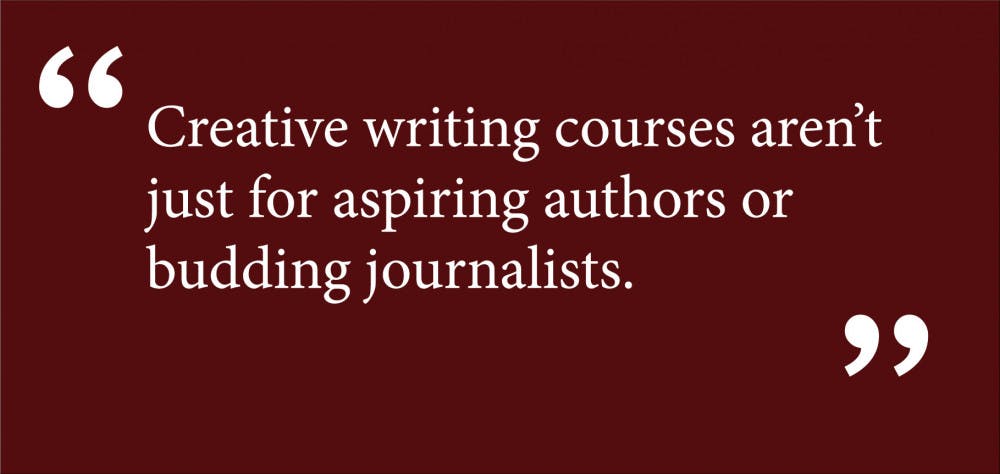Like many other Brown students, I’ve developed a specific routine for pre-registration days: I wake up at 7:30 a.m. and spend a good 20 minutes with my cursor hovering over the “Register Cart” button, hoping to get into a section of ENGL 0930: “Introduction to Creative Nonfiction.” The famed English course — one of the most popular courses at Brown — is notorious for filling up mere seconds after registration opens. Three times running, my hopes were dashed by the dreaded “no seats available” message at precisely 8:01 a.m. But last spring, with an extra early wake up call and a lot of luck, I finally got into the class.
Ironically, last spring was perhaps the one semester I wasn’t desperate to take the course. After a year of writing non-stop for The Herald and the Brown Political Review and taking at least two writing-based courses per semester, I thought I knew all there was to know about college-level writing. Of course, it only took me a couple of classes to realize that Creative Nonfiction — and indeed, most of the creative writing courses at Brown — went well beyond that level and then some.
I went into the class expecting a fun, low-stress S/NC course to take as my fifth class in a busy semester. Instead, I got a course that took up more time than my other four put together and occupied my thoughts day and night. But it also turned out to be one of my favorite courses at Brown and without a doubt one of the most useful.
In the course of a semester, I essentially re-learnt how to write from scratch. I gained a new perspective on writing for an audience and realized that I was making a lot of rookie mistakes. My written work improved noticeably in my other courses because I attacked my papers with renewed enthusiasm. I also had the chance to choose topics that were important to me; after writing about a particularly frustrating incident that brought me to tears, I discovered that the class was both cathartic and liberating. From what I’ve heard, these lessons apply to the majority of creative writing courses at Brown.
Many of my peers tell me that courses like “Creative Nonfiction” and its introductory corollaries in poetry and fiction are a waste of time for non-English concentrators. This is absolutely not true. These courses are helpful to anyone interested in improving their writing and communication skills. Any field we enter after graduation — from scientific research to finance and consulting — will require at least some writing know-how.
Of course, you can also work on these skills in a non-English WRIT-de class. But before “Creative Nonfiction,” I took tons of WRIT-designated courses within my concentration to satisfy my writing urge. Not one of them improved my writing half as much. The courses in the English and literary arts departments are tailored to zero in on specific aspects of your writing that need the most work. They can also push you out of your comfort zone in the best possible way. Rest assured, even if you decide not to write creatively ever again, the lessons you learn can help you with any other form of writing or editing.
The bottom line? Creative writing courses aren’t just for aspiring authors or budding journalists. They can be for the computer science concentrator trying to cross off a WRIT requirement while having fun or the economics concentrator tired of staring at numbers and graphs. They’re useful for anyone with a mild interest in writing and the urge to discover a new side to academics at Brown. Regardless of your class year or academic passion, I can guarantee that these courses offer a unique form of intellectual development. So give them a shot — you never know what you might discover.
Mili Mitra ’18 can be reached at mili_mitra@brown.edu. Please send responses to this opinion to letters@browndailyherald.com and other op-eds to opinions@browndailyherald.com.




